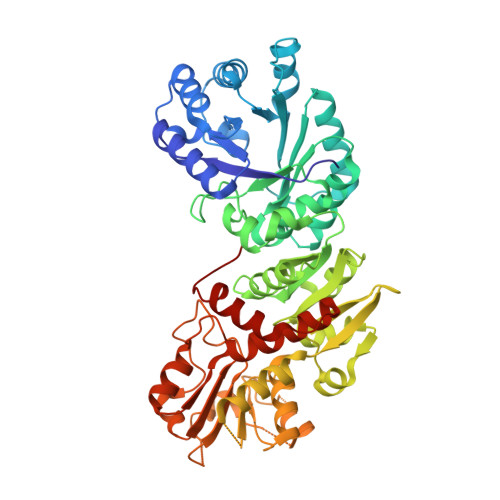Structural and biochemical approaches uncover multiple evolutionary trajectories of plant quinate dehydrogenases.
Gritsunov, A., Peek, J., Diaz Caballero, J., Guttman, D., Christendat, D.(2018) Plant J
- PubMed: 29890023
- DOI: https://doi.org/10.1111/tpj.13989
- Primary Citation of Related Structures:
6BMB, 6BMQ - PubMed Abstract:
Quinate is produced and used by many plants in the biosynthesis of chlorogenic acids (CGAs). Chlorogenic acids are astringent and serve to deter herbivory. They also function as antifungal agents and have potent antioxidant properties. Quinate is produced at a branch point of shikimate biosynthesis by the enzyme quinate dehydrogenase (QDH). However, little information exists on the identity and biochemical properties of plant QDHs. In this study, we utilized structural and bioinformatics approaches to establish a QDH-specific primary sequence motif. Using this motif, we identified QDHs from diverse plants and confirmed their activity by recombinant protein production and kinetic assays. Through a detailed phylogenetic analysis, we show that plant QDHs arose directly from bifunctional dehydroquinate dehydratase-shikimate dehydrogenases (DHQD-SDHs) through different convergent evolutionary events, illustrated by our findings that eudicot and conifer QDHs arose early in vascular plant evolution whereas Brassicaceae QDHs emerged later. This process of recurrent evolution of QDH is further demonstrated by the fact that this family of proteins independently evolved NAD + and NADP + specificity in eudicots. The acquisition of QDH activity by these proteins was accompanied by the inactivation or functional evolution of the DHQD domain, as verified by enzyme activity assays and as reflected in the loss of key DHQD active site residues. The implications of QDH activity and evolution are discussed in terms of plant growth and development.
- Department of Cell and Systems Biology, University of Toronto, 25 Willcocks Street, Toronto, ON, M5S 3B2, Canada.
Organizational Affiliation:



















